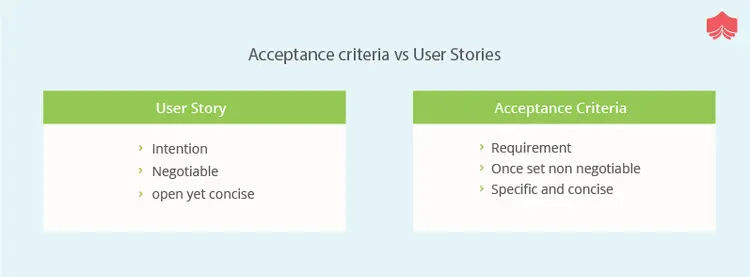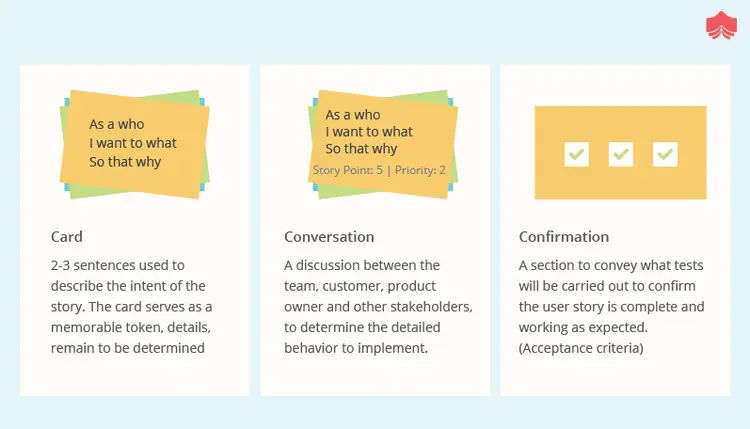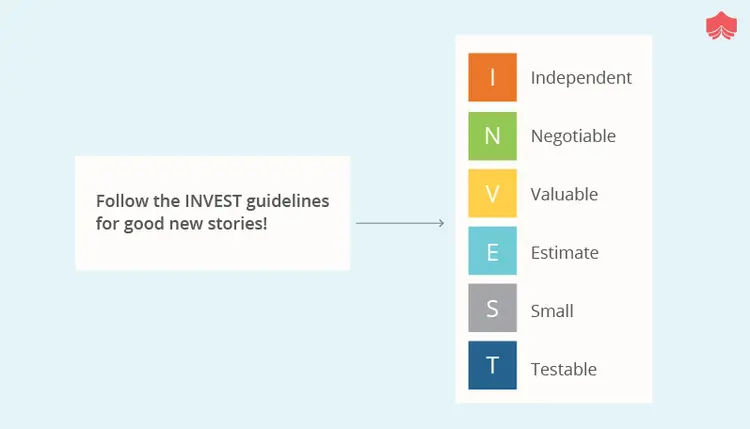- Blog Categories
- Project Management
- Agile Management
- IT Service Management
- Cloud Computing
- Business Management
- Business Intelligence
- Quality Engineer
- Cyber Security
- Career
- Big Data
- Programming
- Most Popular Blogs
- PMP Exam Schedule for 2024: Check PMP Exam Date
- Top 60+ PMP Exam Questions and Answers for 2024
- PMP Cheat Sheet and PMP Formulas To Use in 2024
- What is PMP Process? A Complete List of 49 Processes of PMP
- Top 15+ Project Management Case Studies with Examples 2024
- Top Picks by Authors
- Top 170 Project Management Research Topics
- What is Effective Communication: Definition
- How to Create a Project Plan in Excel in 2024?
- PMP Certification Exam Eligibility in 2024 [A Complete Checklist]
- PMP Certification Fees - All Aspects of PMP Certification Fee
- Most Popular Blogs
- CSM vs PSM: Which Certification to Choose in 2024?
- How Much Does Scrum Master Certification Cost in 2024?
- CSPO vs PSPO Certification: What to Choose in 2024?
- 8 Best Scrum Master Certifications to Pursue in 2024
- Safe Agilist Exam: A Complete Study Guide 2024
- Top Picks by Authors
- SAFe vs Agile: Difference Between Scaled Agile and Agile
- Top 21 Scrum Best Practices for Efficient Agile Workflow
- 30 User Story Examples and Templates to Use in 2024
- State of Agile: Things You Need to Know
- Top 24 Career Benefits of a Certifed Scrum Master
- Most Popular Blogs
- ITIL Certification Cost in 2024 [Exam Fee & Other Expenses]
- Top 17 Required Skills for System Administrator in 2024
- How Effective Is Itil Certification for a Job Switch?
- IT Service Management (ITSM) Role and Responsibilities
- Top 25 Service Based Companies in India in 2024
- Top Picks by Authors
- What is Escalation Matrix & How Does It Work? [Types, Process]
- ITIL Service Operation: Phases, Functions, Best Practices
- 10 Best Facility Management Software in 2024
- What is Service Request Management in ITIL? Example, Steps, Tips
- An Introduction To ITIL® Exam
- Most Popular Blogs
- A Complete AWS Cheat Sheet: Important Topics Covered
- Top AWS Solution Architect Projects in 2024
- 15 Best Azure Certifications 2024: Which one to Choose?
- Top 22 Cloud Computing Project Ideas in 2024 [Source Code]
- How to Become an Azure Data Engineer? 2024 Roadmap
- Top Picks by Authors
- Top 40 IoT Project Ideas and Topics in 2024 [Source Code]
- The Future of AWS: Top Trends & Predictions in 2024
- AWS Solutions Architect vs AWS Developer [Key Differences]
- Top 20 Azure Data Engineering Projects in 2024 [Source Code]
- 25 Best Cloud Computing Tools in 2024
- Most Popular Blogs
- Company Analysis Report: Examples, Templates, Components
- 400 Trending Business Management Research Topics
- Business Analysis Body of Knowledge (BABOK): Guide
- ECBA Certification: Is it Worth it?
- How to Become Business Analyst in 2024? Step-by-Step
- Top Picks by Authors
- Top 20 Business Analytics Project in 2024 [With Source Code]
- ECBA Certification Cost Across Countries
- Top 9 Free Business Requirements Document (BRD) Templates
- Business Analyst Job Description in 2024 [Key Responsibility]
- Business Analysis Framework: Elements, Process, Techniques
- Most Popular Blogs
- Best Career options after BA [2024]
- Top Career Options after BCom to Know in 2024
- Top 10 Power Bi Books of 2024 [Beginners to Experienced]
- Power BI Skills in Demand: How to Stand Out in the Job Market
- Top 15 Power BI Project Ideas
- Top Picks by Authors
- 10 Limitations of Power BI: You Must Know in 2024
- Top 45 Career Options After BBA in 2024 [With Salary]
- Top Power BI Dashboard Templates of 2024
- What is Power BI Used For - Practical Applications Of Power BI
- SSRS Vs Power BI - What are the Key Differences?
- Most Popular Blogs
- Data Collection Plan For Six Sigma: How to Create One?
- Quality Engineer Resume for 2024 [Examples + Tips]
- 20 Best Quality Management Certifications That Pay Well in 2024
- Six Sigma in Operations Management [A Brief Introduction]
- Top Picks by Authors
- Six Sigma Green Belt vs PMP: What's the Difference
- Quality Management: Definition, Importance, Components
- Adding Green Belt Certifications to Your Resume
- Six Sigma Green Belt in Healthcare: Concepts, Benefits and Examples
- Most Popular Blogs
- Latest CISSP Exam Dumps of 2024 [Free CISSP Dumps]
- CISSP vs Security+ Certifications: Which is Best in 2024?
- Best CISSP Study Guides for 2024 + CISSP Study Plan
- How to Become an Ethical Hacker in 2024?
- Top Picks by Authors
- CISSP vs Master's Degree: Which One to Choose in 2024?
- CISSP Endorsement Process: Requirements & Example
- OSCP vs CISSP | Top Cybersecurity Certifications
- How to Pass the CISSP Exam on Your 1st Attempt in 2024?
- Most Popular Blogs
- Best Career options after BA [2024]
- Top Picks by Authors
- Top Career Options & Courses After 12th Commerce in 2024
- Recommended Blogs
- 30 Best Answers for Your 'Reason for Job Change' in 2024
- Recommended Blogs
- Time Management Skills: How it Affects your Career
- Most Popular Blogs
- Top 28 Big Data Companies to Know in 2024
- Top Picks by Authors
- Top Big Data Tools You Need to Know in 2024
- Most Popular Blogs
- Web Development Using PHP And MySQL
- Top Picks by Authors
- Top 30 Software Engineering Projects in 2024 [Source Code]
- More
- Tutorials
- Practise Tests
- Interview Questions
- Free Courses
- Agile & PMP Practice Tests
- Agile Testing
- Agile Scrum Practice Exam
- CAPM Practice Test
- PRINCE2 Foundation Exam
- PMP Practice Exam
- Cloud Related Practice Test
- Azure Infrastructure Solutions
- AWS Solutions Architect
- AWS Developer Associate
- IT Related Pratice Test
- ITIL Practice Test
- Devops Practice Test
- TOGAF® Practice Test
- Other Practice Test
- Oracle Primavera P6 V8
- MS Project Practice Test
- Project Management & Agile
- Project Management Interview Questions
- Release Train Engineer Interview Questions
- Agile Coach Interview Questions
- Scrum Interview Questions
- IT Project Manager Interview Questions
- Cloud & Data
- Azure Databricks Interview Questions
- AWS architect Interview Questions
- Cloud Computing Interview Questions
- AWS Interview Questions
- Kubernetes Interview Questions
- Web Development
- CSS3 Free Course with Certificates
- Basics of Spring Core and MVC
- Javascript Free Course with Certificate
- React Free Course with Certificate
- Node JS Free Certification Course
- Data Science
- Python Machine Learning Course
- Python for Data Science Free Course
- NLP Free Course with Certificate
- Data Analysis Using SQL
User Story Best Practices: Tips to Write Best User Stories in Scrum
By Lindy Quick
Updated on Jan 04, 2019 | 10 min read | 10.9k views
Share:
Table of Contents
The main reason most projects move to Agile is they would like to see results fast. These results cannot be achieved quickly if there is a lack of clarity on the outcome, this is where the user story comes in. You might also find it interesting to go through User Stories examples.
User stories are like mini single-line business requirements which tell you the Who for, Why, and What to develop. Requirements in Agile are written in a story format and not in name-value pair format either; this is because when you read a story you understand better. Go for CSPO certification training and advance your knowledge with an experiential learning format.
Who Owns and Documents User Stories?
There has never been any confusion about who is responsible for a User story - It is the Product Owner. But there are often doubts about who can write them - And the answer is “Anybody”. Anybody who has clarity on the requirement can add details, usually, if there is a Business Analyst in the team, they would document requirements, and in other teams the team member documents them. In the end, the Product owner should, however, review and accept them.
Anatomy of a User Story
The user story has elements that have to be present and is usually documented in the pattern given in all Agile projects. This helps in bringing in uniformity and the structure ensures that none of the components that make a story so powerful is a lot.
| The most common user story Patterns are: As a Persona, I should be able to do something so that I get this benefit OR In order to receive benefits as a role, I can goal/desire |
However, there are many attributes of a user story that defines and make them:
| A Unique ID | To identify a requirement uniquely. When an ALM tool is used, this attribute is set by default by the team for each requirement. |
| Summary | This is the short name/summary/ title of the requirement |
| Description | This is the user story as given in the user story format |
| Acceptance Criteria | These are the details and the actual content of what is to be developed to achieve the end result. There are many formats for writing acceptance criteria, and it could also be just single-line criteria. The important point to note is, that if it is not in the acceptance criteria, it is not to be developed. |
| Estimation | Every user story is estimated in Story points which is the stand Progress and metric in Agile projects. |
| Status | This indicated the completion stage of the user story- It starts from Idea (single line usually) to Defined, Refined, Planned, In progress, Completed, and Accepted. |
When user stories are displayed on Storyboards they are often displayed on Post-It notes and referred to as Story Cards or just “Cards”. This card displays basic and yet enough information to start a discussion :
Insider Tips to Land Your Dream Scrum Master Job
Includes Scrum Resume Sample

Tips for Writing the Best User Stories in Scrum
A user story is only as effective as the discussions on them, and they are only as effective as the participation. Having ceremonies such as Refinement sessions or Amigo sessions is what makes user stories effective. A user story written in the correct format is the biggest step, and the next step is getting the acceptance criteria clearly documented.
Characteristics of User Stories
- A good user story is written in one to three lines
- A good story should always be in the active voice
- User stories are used to communicate. So make them visible and accessible
Tips for Writing Good User Stories
- Keep your user stories clear and concise
- Write user stories collaboratively
- Start with Epics
- Refine the stories until they are ready
User Stories Acceptance Criteria
There are many formats for documenting acceptance criteria:
Just simple sentences OR
As scenarios OR
As scenarios in Gherkin format (Given.. When.. Then..)
Gherkin format is especially popular in teams where Testing is automated since the Acceptance criteria can be reused, and this reduces any instance of requirement ambiguity or misinterpretation.

Non-Functional Requirements in User Stories
Often, non-functional requirements are not documented as stories, and they are a part of the Definition of Done (DOD). Performance, for example, should not be impacted by any story, and the development should be scalable for every user story. These may be documented for final verification however cannot implement as a separate story.
Managing User Stories
Requirements in agile projects are negotiable. They can be discussed and modified till they are in the sprint, and even when they are in the sprint when there is better clarity the requirements can be modified. To manage this change and have a central repository it is important to manage requirements in an online tool that would provide a single version of the truth.
There are multiple tools available online such as Jira from Atlassian, Rally, Rational Requirement Composer (RRC), VersionOne, etc which provide a platform for managing requirements and also their lifecycle from idea to the acceptance stage.
Lifecycle of a User Story
The detailing of a story card is done through multiple stages of the grooming process. These are broadly classified into 3 stages known as the 3Cs:
- Card – At this stage, only the purpose of the card is highlighted with no or very little details on the actual expectation
- Conversations on the Card – At this stage members from the development, test, and requirement/business teams discuss the scope of the card (in scope and out-of-scope functionalities) and also provide estimates on the card
- Confirmation- At this stage, the acceptance criteria and tests which have to be completed to confirm that the requirement is working are added to the card

Invest in Good User Stories
Writing requirements in User story format was a practice first adopted in Xtreme Programming. This was a part of involving the end users early and getting their perspective of what has to be developed. In 1998 Alistair Cockburn visited the Chrysler C3 project in Detroit and coined the phrase "A user story is a promise for a conversation.". It is a business statement of what is needed and why.
However, for the user stories to become effective it is also important that they follow some best practices so that the business and development teams have a common guideline.
These guidelines are referred to as the INVEST criteria, where INVEST is an acronym for:

- "I" independent (of all others) - The story can be worked on independently and shown to the end user - all dependencies are completed and no longer a blocker
- "N" negotiable (not a specific contract for features) - Stories should be the starting point for conversation and they should not be treated like a contract negotiable.
- "V" valuable (contract negotiable or vertical) - They should provide value to the end user.
- "E" estimable (to a good approximation) - Only stories which are clear can be estimated, and in agile estimation are the best understanding guess based on the relative size.
- "S" small (so as to fit within an iteration) - The story should be sized appropriately. They should not be too small or too big.
"T" testable (in principle, even if there isn't a test for it yet) - If there is a value expected from the story it should be testable and validated as delivered stable.
Why do Other Requirements Still Exist if User Story is Good?
- User stories are starters for conversation and so they are preferred in projects where the Product owner is available for discussion. When the presence of a business member is not possible for the team all through the sprints, it could be difficult to have User stories as requirements.
- User stories do not tell you how to develop - They just tell you what and why. If the team is new to the technology, user stories might not be good enough and the team would need a lot of support and guidance from experts to start the implementation.
- Often user stories are misunderstood as being flexible even during implementation and team implementation more than documented- unless guided well the technical implementation could be impacted.
- Sometimes writing a user story can be tricky and time-consuming. User stories have a simple single-sentence template, and are supported by acceptance criteria - and the acceptance criteria could depending on the maturity of the team become a binder or be treated as a contract by the members making it extremely difficult for the person documenting them.
Conclusion
Agile projects have requirements documented as User stories and approved by the Product owners, and with a self-motivated team that is aware of the business goals working on them, User stories trigger the right conversations leading to the best designs.
Frequently Asked Questions (FAQs)
1. What is an example of a user story best practice?
2. What are the 5 components of a user story?
3. What is the formula for a user story?
Get Free Consultation
By submitting, I accept the T&C and
Privacy Policy
Ready to lead with Scrum expertise?


